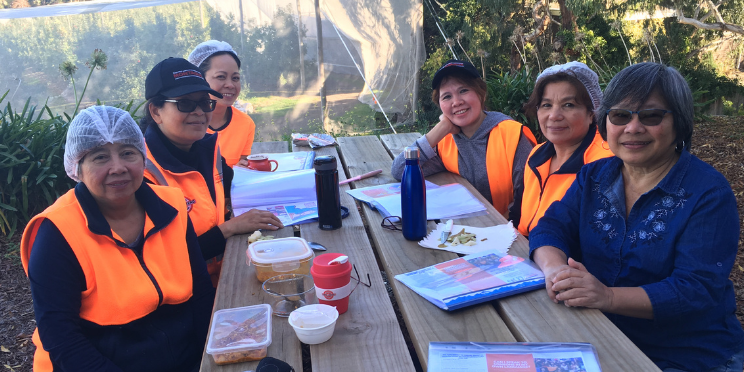
Who would have thought the humble doughnut would become a symbol of hope and wellbeing? Ever since the double zero (or doughnut) notification days, the future in Victoria looks a little brighter and what better time to reflect on how we can harness this sense of optimism so we can ensure recovery is equitable, and particularly for migrant and refugee women.
We have commented in previous WRAPs that recovery from the pandemic must be an inclusive project. To achieve this, at least from an economic perspective, the industries and occupations in which migrant women are concentrated must be specifically targeted for reform.
The labour force in Australia is highly gendered and racialised, and impacted by the migration policy of the day. As a result, we see clear trends in the industries and occupations of migrant women, with variations depending on the visa category on which women happen to have entered Australia. It’s important to note that migrant women’s workplace experience, affected as it is by combined race and gender discrimination, is different to that of migrant men, and to that of non-migrant women.
The top industries employing migrant women are Health and Social Assistance, Accommodation and Food Services and the Retail Trade. Top occupations amongst migrant women are Professionals (in business and health care), Community and Personal Services Workers, Clerical and Administrative Workers and Sales Workers. Women on permanent skilled visas are more likely to staff hospitals and businesses, while women on family and humanitarian visas are more likely to work in food service, retail stores and factories, which are also workplaces in which temporary migrant women are concentrated.
In other words, Australia’s aged care facilities, health and community services, hotels, restaurants, cafés, and shops rely heavily on the labour of migrant women, permanent and temporary, to function. Many of these workplaces remained open throughout the restrictions in Victoria, putting migrant women workers on the front line of transmission, doing the essential jobs of caring and putting food on Victoria’s tables. At the same time, migrant women workers are less likely to have been able to work from home and those who worked in industries that were shut down are less likely to have had access to government financial support, due to the sometimes discriminatory eligibility criteria.
As we develop the COVID-Normal world let’s make it one that recognises the diversity of experience, that acknowledges that migrant women belong, contribute and make that world better. But much more importantly, let’s give full meaning to the statement that we’re in this together by working together to eliminate gender and race discrimination and make our labour force truly equitable and fair. After all, ‘equity is never a zero sum game where one person’s loss is another person’s gain: in an ideal post-COVID world there should be plenty of doughnuts – or lukma, sfenj, jalebi or fritule – to go around.
